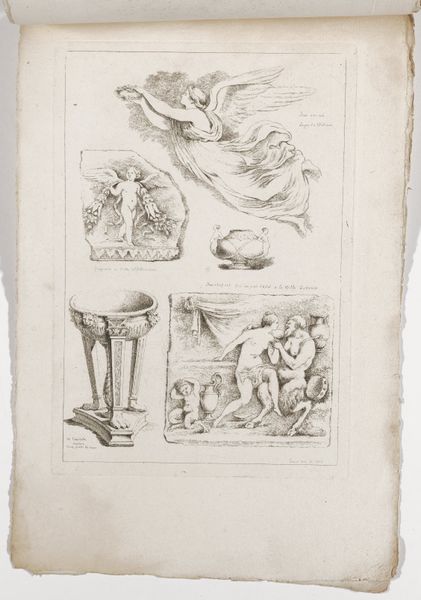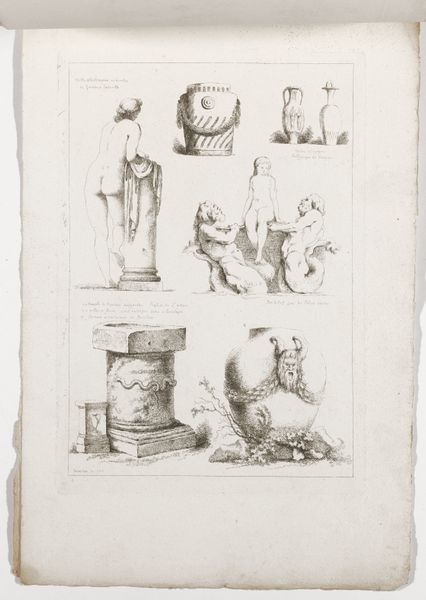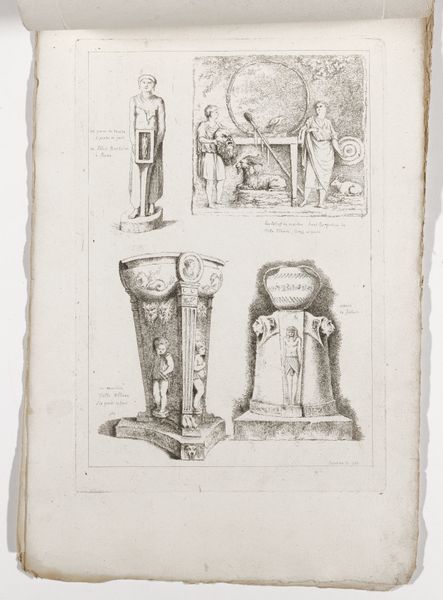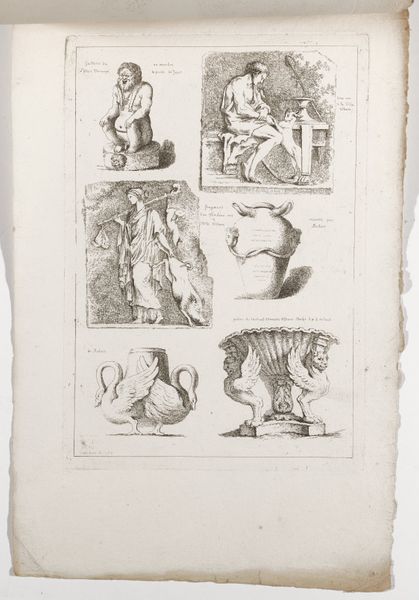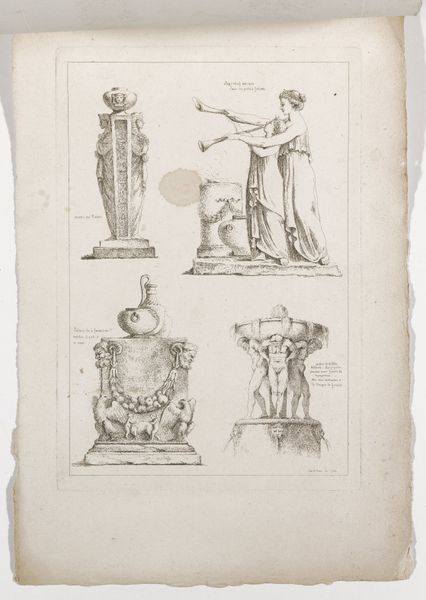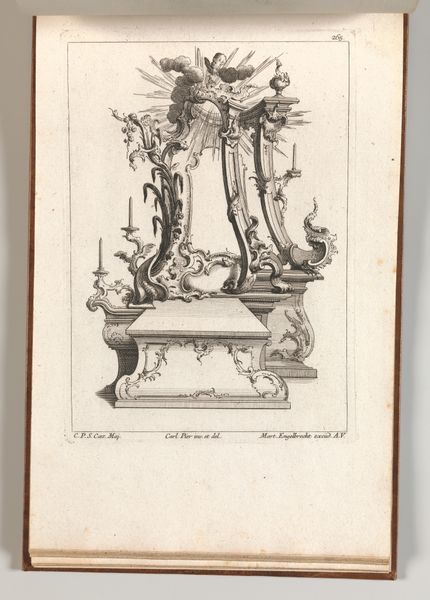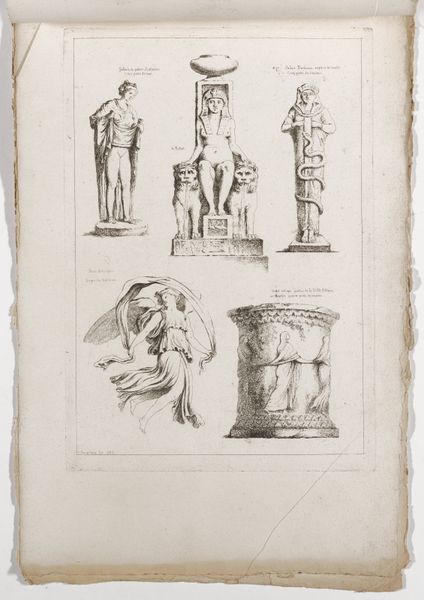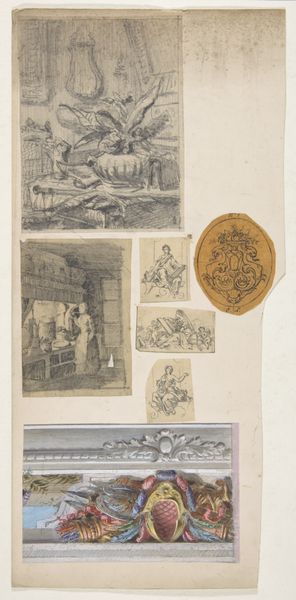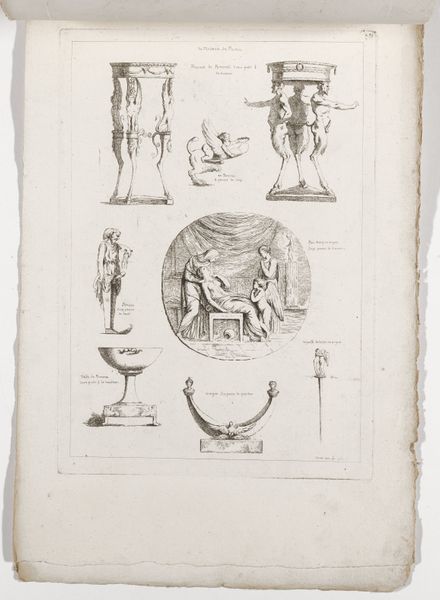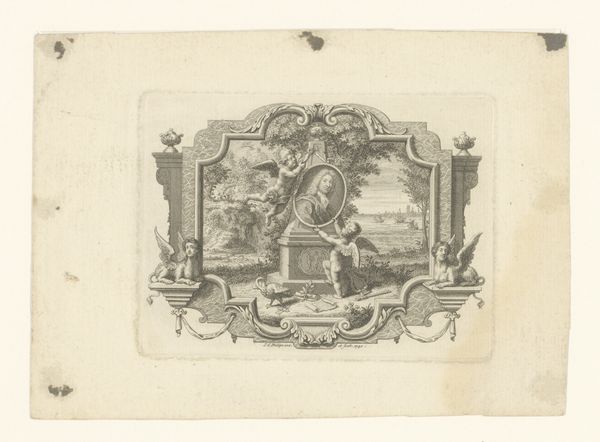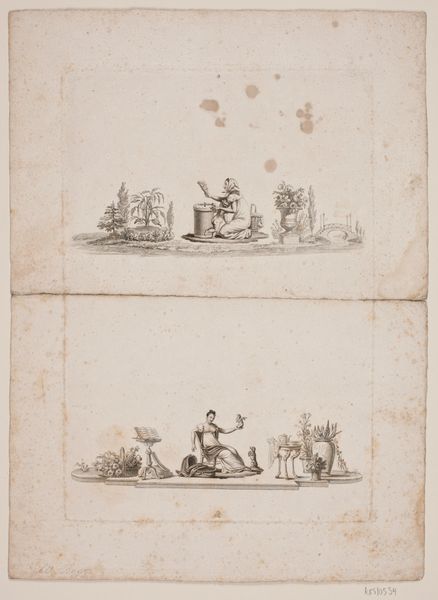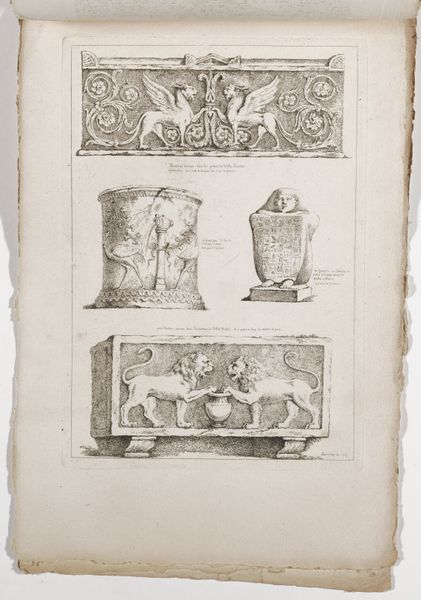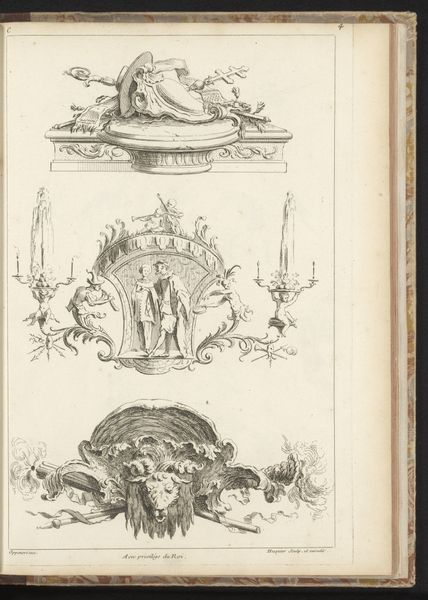
Dimensions: 12 3/4 × 9 1/16 in. (32.39 × 23.02 cm) (plate)17 3/16 × 11 in. (43.66 × 27.94 cm) (sheet)
Copyright: Public Domain
This etching by Jean Claude Richard, Abbé de Saint-Non, presents a collection of architectural and sculptural studies. Dominating the composition are the classical motifs: a fountain adorned with a sculptural relief, a seated god-like figure, a pyramid and a double-faced herm. Consider the double-faced herm, reminiscent of the Roman god Janus, guardian of doorways and transitions. Janus embodies duality, looking simultaneously to the past and the future. This motif echoes through time, reappearing in Renaissance emblems, and even in modern psychological studies where it symbolizes the conscious and subconscious mind. The emotional resonance of such imagery lies in its ability to tap into our collective unconscious, a concept Jung would have appreciated. The double-faced figure pulls us, triggering a deep-seated awareness of life’s inherent polarities: beginning and end, male and female, light and shadow. Observe how such symbols have been continuously reinterpreted, their essence surviving, their forms evolving, echoing through the corridors of time and human experience.
Comments
No comments
Be the first to comment and join the conversation on the ultimate creative platform.
